Enjoy a good latte every now and then and curious about using soy milk along with some traditional Japanese flavors? Read on for 5 of my favorite ways to make soy milk lattes at home. It’s easier than you think!
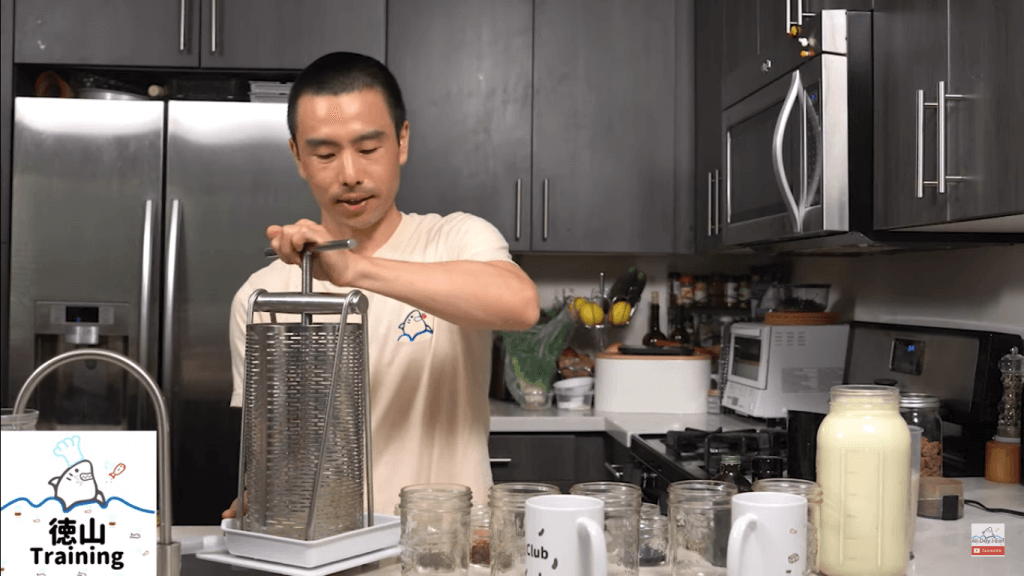
why soy milk lattes?
Soy milk and cow’s milk are both types of milk that are commonly used in lattedrinks, but they have some key differences in terms of taste, nutrition, and processing.
- Taste: Soy milk has a slightly nutty taste and a creamy texture, while cow’s milk has a mild, slightly sweet taste and a smooth texture. Some people might prefer the taste of soy milk, while others might prefer cow’s milk.
- Nutrition: Soy milk is a good source of protein and contains all essential amino acids. It is also a good source of iron and has lower saturated fat compared to cow’s milk. Cow’s milk is a good source of calcium, Vitamin D, and Vitamin B12 and also contains other essential minerals and nutrients.
- Processing: Soy milk is made from soybeans that are soaked, ground, and then mixed with water. It is then strained and blended, to get a smooth and creamy texture. Cow’s milk is produced from cows, it is pasteurized and homogenized, that process makes the milk safe to drink and gives it a consistent texture.
- Allergies and intolerances: Some people may be allergic or intolerant to cow’s milk, which can cause symptoms such as stomach pain, bloating, and diarrhea. Soy milk is a common alternative for people who are lactose intolerant and still want to enjoy similar textures and flavors of cow milk based lattes.
5 Ways to Enjoy and Make soymilk latte
I’m going to show you five different, delicious ways that you could enjoy Japanese-style lattes, either hot or cold, depending on your mood, and of course, the outside temperature or inside temperature as well.
We’re gonna be making five sweet variations:
- Black sesame (kurogoma) which can be made from black sesame paste (nerigoma)
- Koshian (red bean paste) made from crushing sweet red beans (azuki)
- Matcha (green
tea powder) made sweet with kuromitsu or kokutou (black Okinawan sugar) - Hojicha (roasted Japanese green
tea ) powdered in a spice grinder - Kinako (roasted soybean flour), premade or made from crushed dried and roasted soybeans!
Question of the day: Have you ever made a Japanese-style latte with soy milk?

Tips for making soy milk latte
Because this is freshly made, or you can put it over ice to chill it, or you can even just put it in the refrigerator to chill as well if you’re making a large batch.
All these are very delicious and slightly sweet. You can always adjust your taste with a little bit more sugar, or sweetener, or something like maple syrup, for example.
I hope you get a chance to enjoy them.
PS in the video, I used my little fruit press, it really helps to extract the milk and separate it from the okara as compared to a nut milk bag.
PrintSoy Milk Latte Recipes | 5 ways to enjoy japanese style soy milk lattes
Ingredients
For Matcha Latte:
- 1 cup soymilk
- 1/4 tsp matcha powder
- 1 tbsp Kokuto (black okinawan sugar) or muscovado sugar
For Kinako Latte:
- 1 cup soymilk
- 5 tsp kinako flour
- 1 tbsp Kokuto or muscovado sugar
For Hojicha Latte:
- 1 cup soymilk
- 2 tsp hojicha (roasted green tea powder)
- 1 tbsp white sugar
For Azuki Latte:
- 1 cup soymilk
- 2 tsp smashed azuki (Koshian)
- 1/2 tsp vanilla extract
- sugar (optional)
For Nerigoma (black sesame) Latte:
- 1 cup soymilk
- 1 1/2 tbsp nerigoma paste
- 1 tbsp maple syrup
Instructions
- Add the ingredients for each latte flavor to their respective cups of soy milk.
- Mix together, preferable using an immersion blender. A regular blender is fine too.
- Serve each cup any way you want: iced, chilled, or hot.


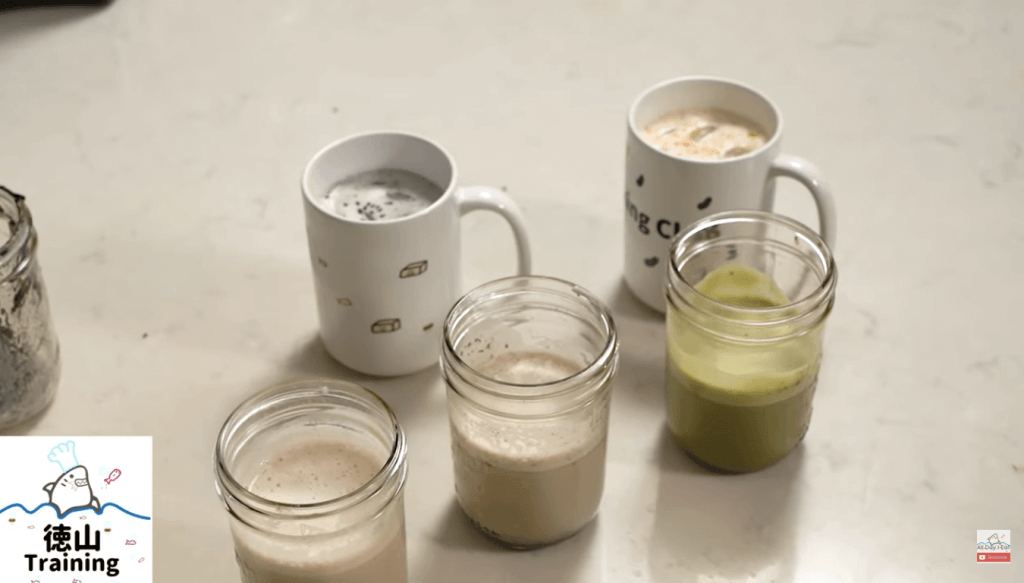
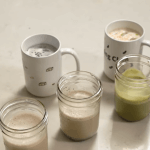
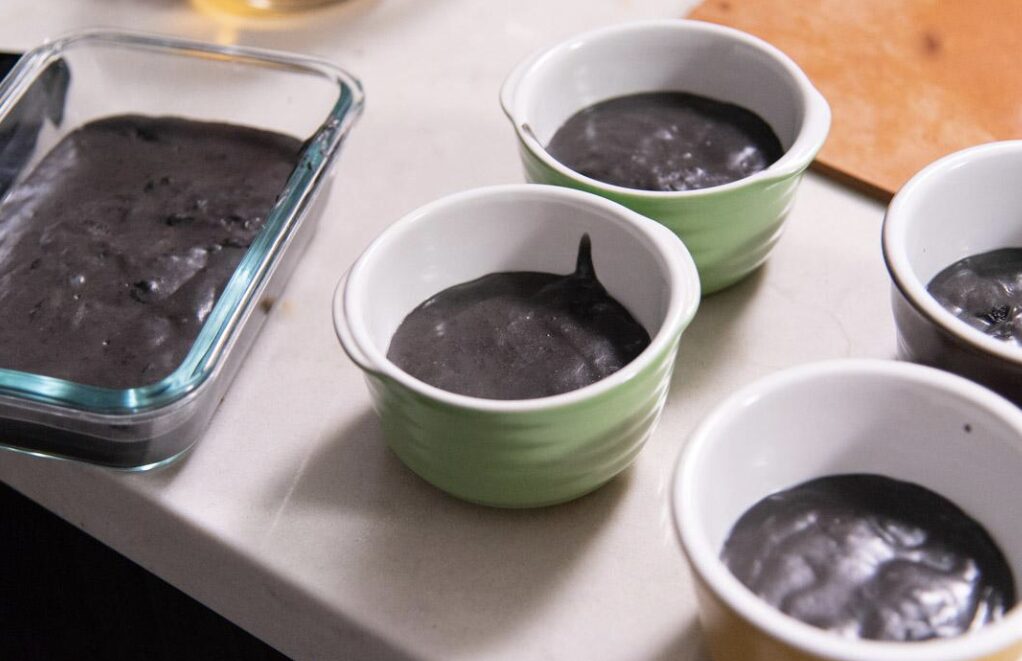
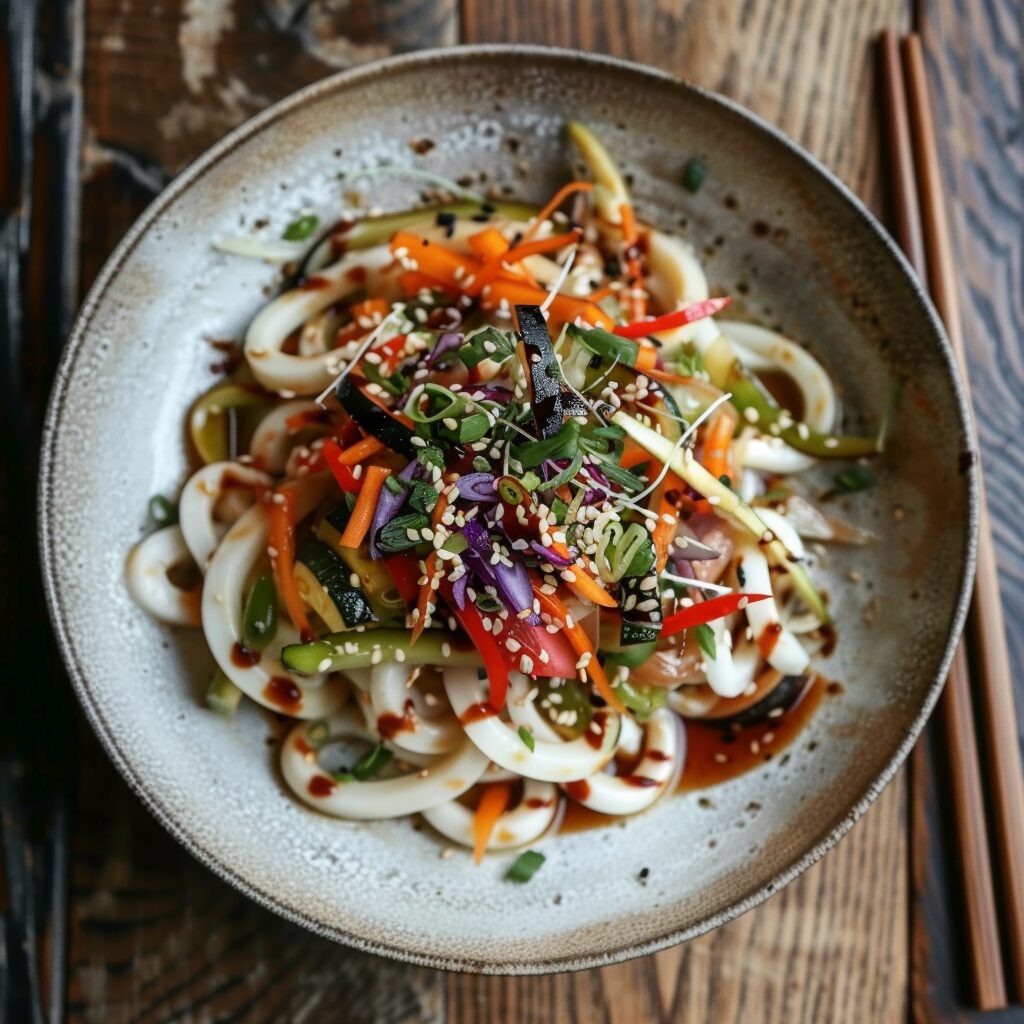

Konnichiwa! (Hello!) I'm Pat Tokuyama, a Japanese tofu cookbook author, who travels for music, food, and adventure. If you like Japanese tea, checkout some of the newestorganic japanese tea, matcha bowls and noren and more!
** Curious about the Plant Based Japanese Cooking Club? ** Learn more here!